In Dreux, in the Eure-et-Loir region of France, an unusual chapel is hidden! The Royal Chapel of Dreux is indeed the necropolis of the Orleans family where about fifty members of the Orleans family, including Louis-Philippe, the last king of the French, are buried.
What is the history of the Royal Chapel of Dreux? And what can we see there? Let’s go and discover it!
Summary
The history of the Royal Chapel of Dreux
In the second half of the 18th century, the Duke of Penthievre was forced to give up the Rambouillet castle to his cousin, King Louis XVI, and was offered, as compensation, the county of Dreux. The duke then transferred the coffins of his relatives to the collegiate church of the castle of Dreux where he himself was buried in March 1793.
The estate then entered a troubled period: in November 1793, the family vault was violated to recover the lead from the coffins while the bodies were thrown into a common grave. Then, in 1798, the estate was confiscated as national property and sold to a merchant who demolished part of the church to recover the materials.
The birth of the necropolis of the Orleans family
Under the Restoration, in 1816, the duke’s daughter, Adélaïde de Bourbon, duchess of Orléans, bought the land and had a chapel built on the site of the common grave in order to make Saint-Louis de Dreux the burial place of her family.
A few years later, the son of the duchess, Louis-Philippe I, became King of France and enlarged the chapel which became the dynastic necropolis of the Orléans family.
In the 20th century, Henri d’Orléans, Count of Paris, donated the chapel to the Fondation Saint-Louis, which still owns it. The chapel continues to serve as a necropolis for the descendants of the Orléans family.
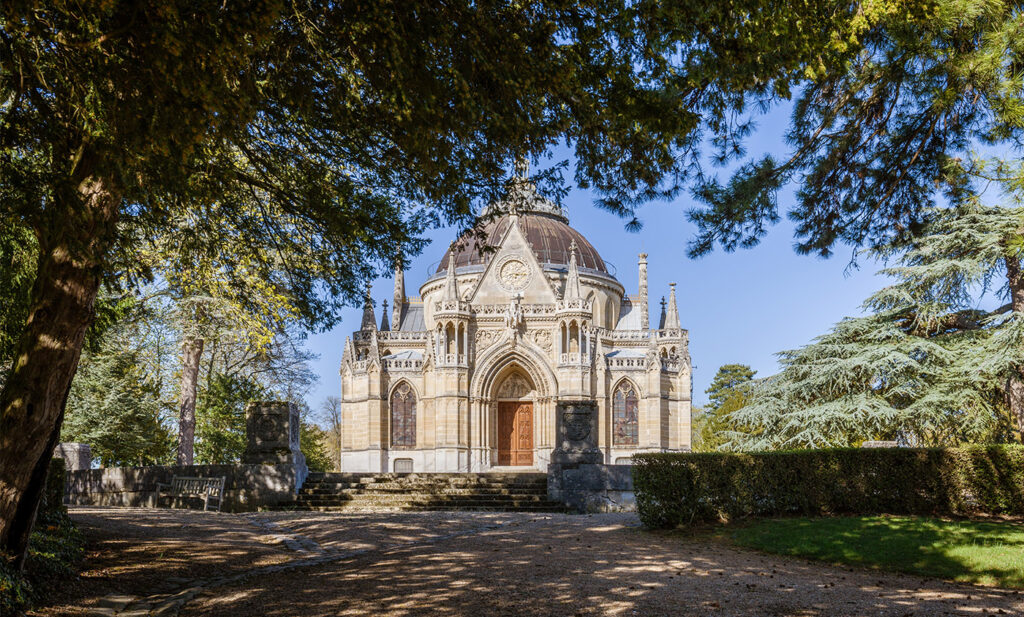
Tour of the Royal Chapel of Dreux
The chapel is a true marvel, a masterpiece of neo-gothic architecture. As you enter, you naturally look up at the dome where there is a stained glass window made by the Manufacture de Sèvres, just like all the stained glass windows in the chapel.
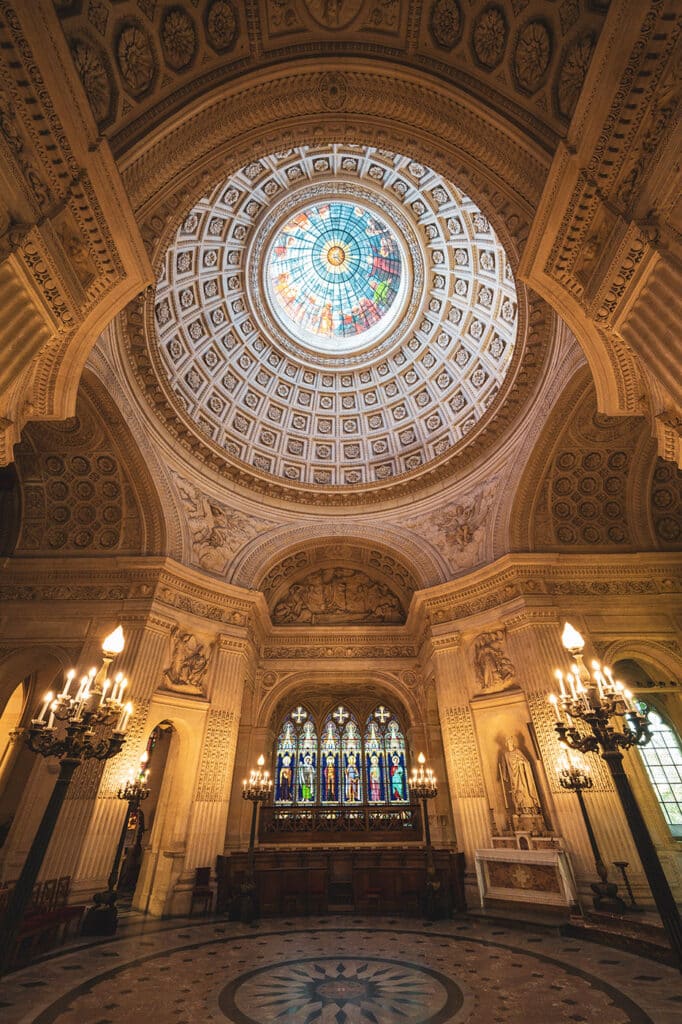

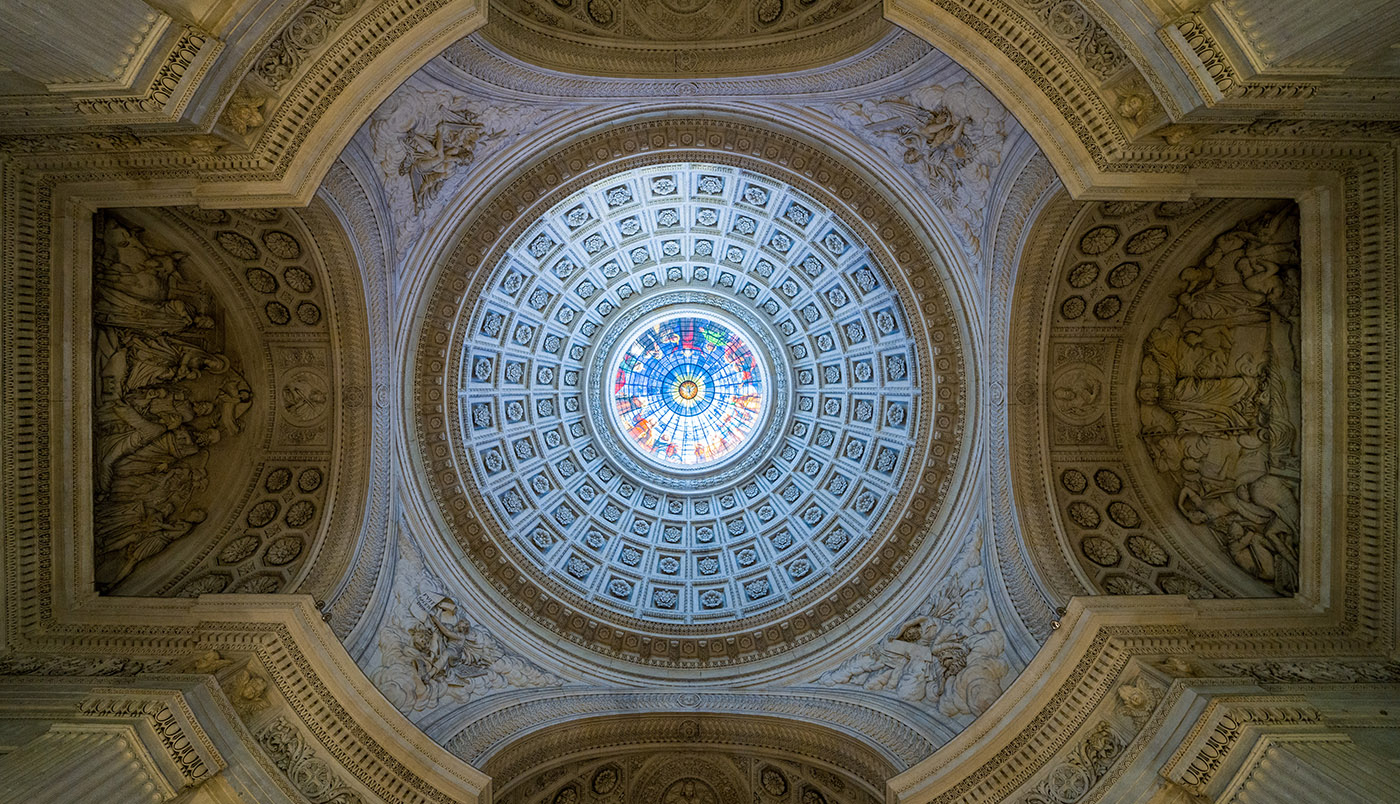
The ambulatory and the crypt are home to some fifty tombs of the Orléans family, grouped around the royal tomb of Louis-Philippe. The impressive recumbents make the Royal Chapel of Dreux a superb museum of sculpture.

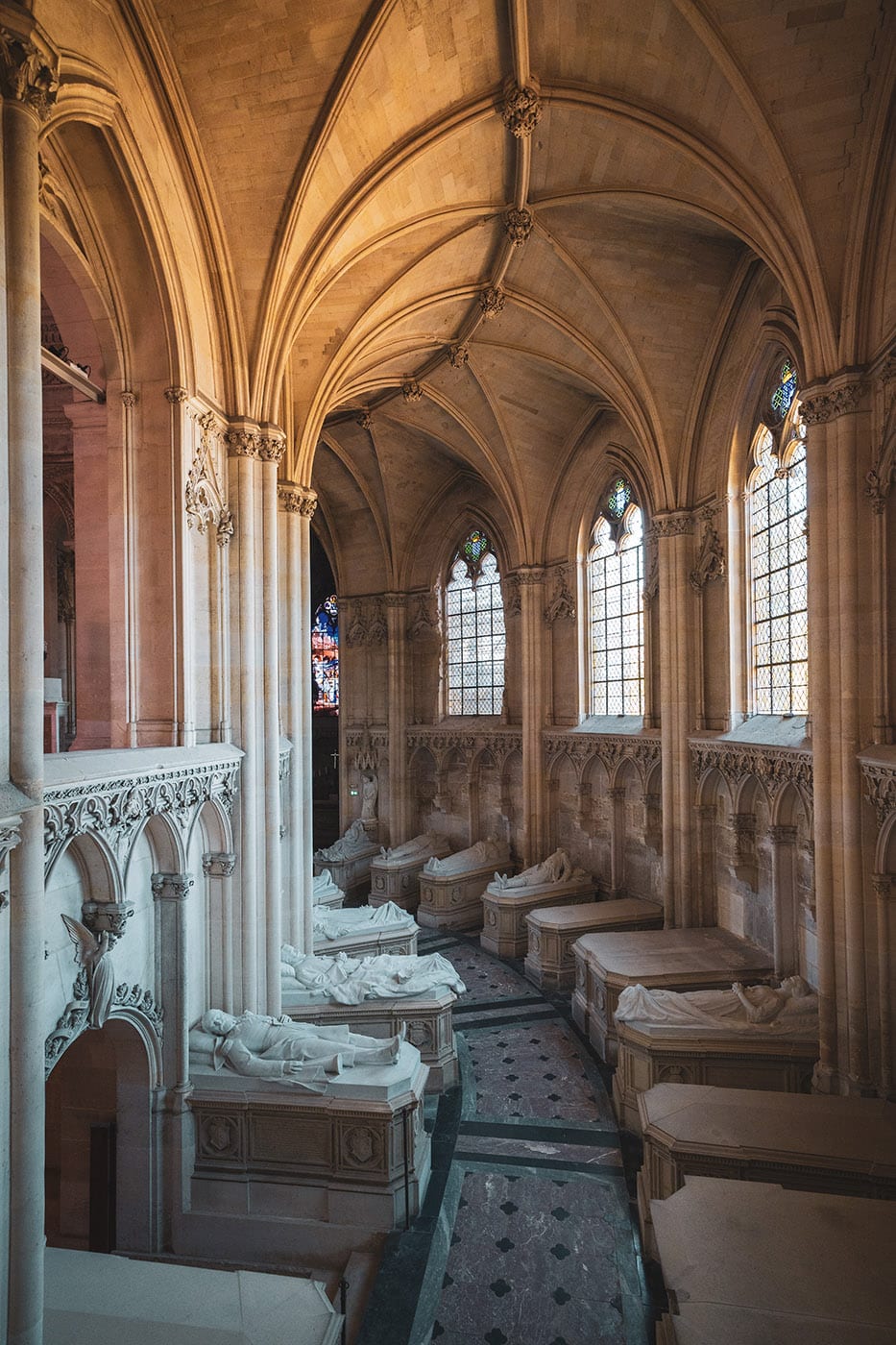
Of particular interest is the tomb of Sophie-Charlotte of Bavaria, the sister of the Austrian Empress Elisabeth of Wittelsbach (better known by the nickname “Sissi”), who died tragically in the fire at the Bazar de la Charité. Her recumbent statue, made by Charles-Albert Walhain, represents some pieces of wood on fire, reminding us of the circumstances of her death.
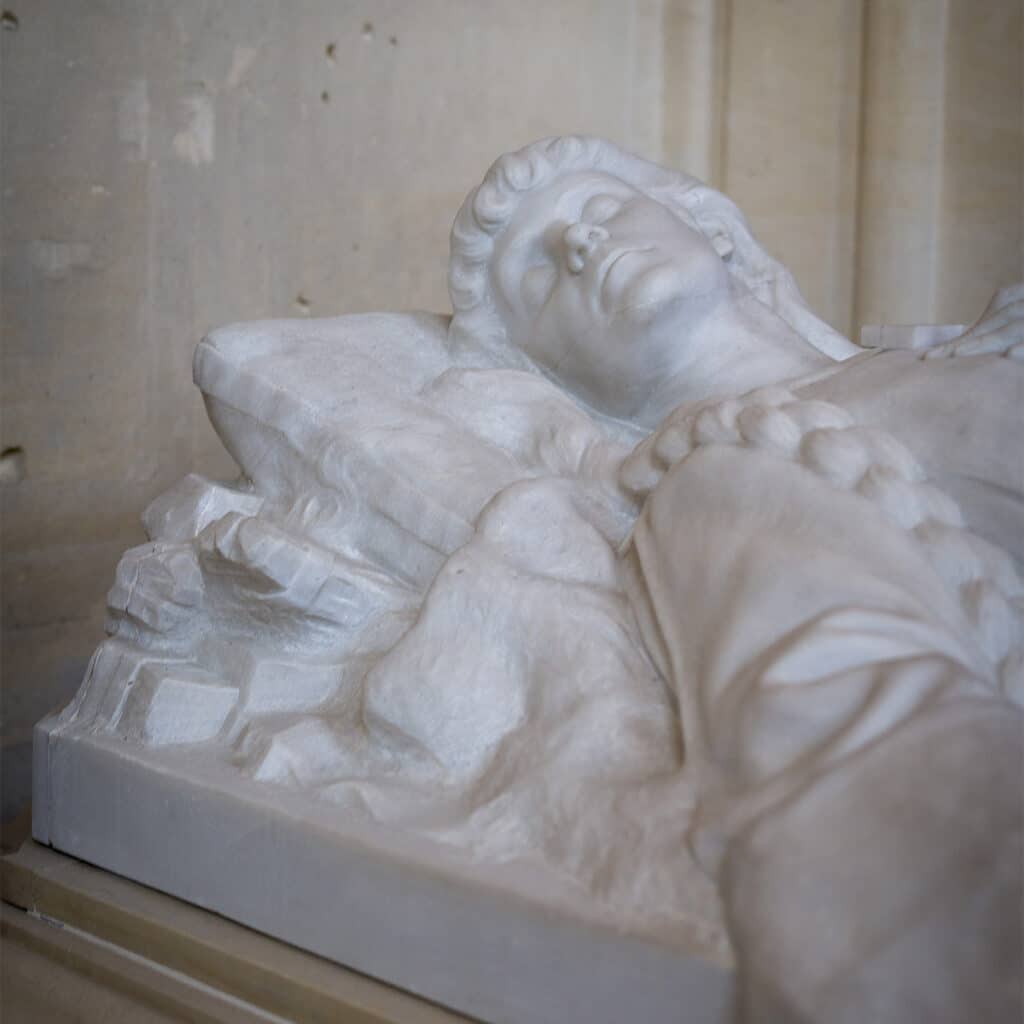
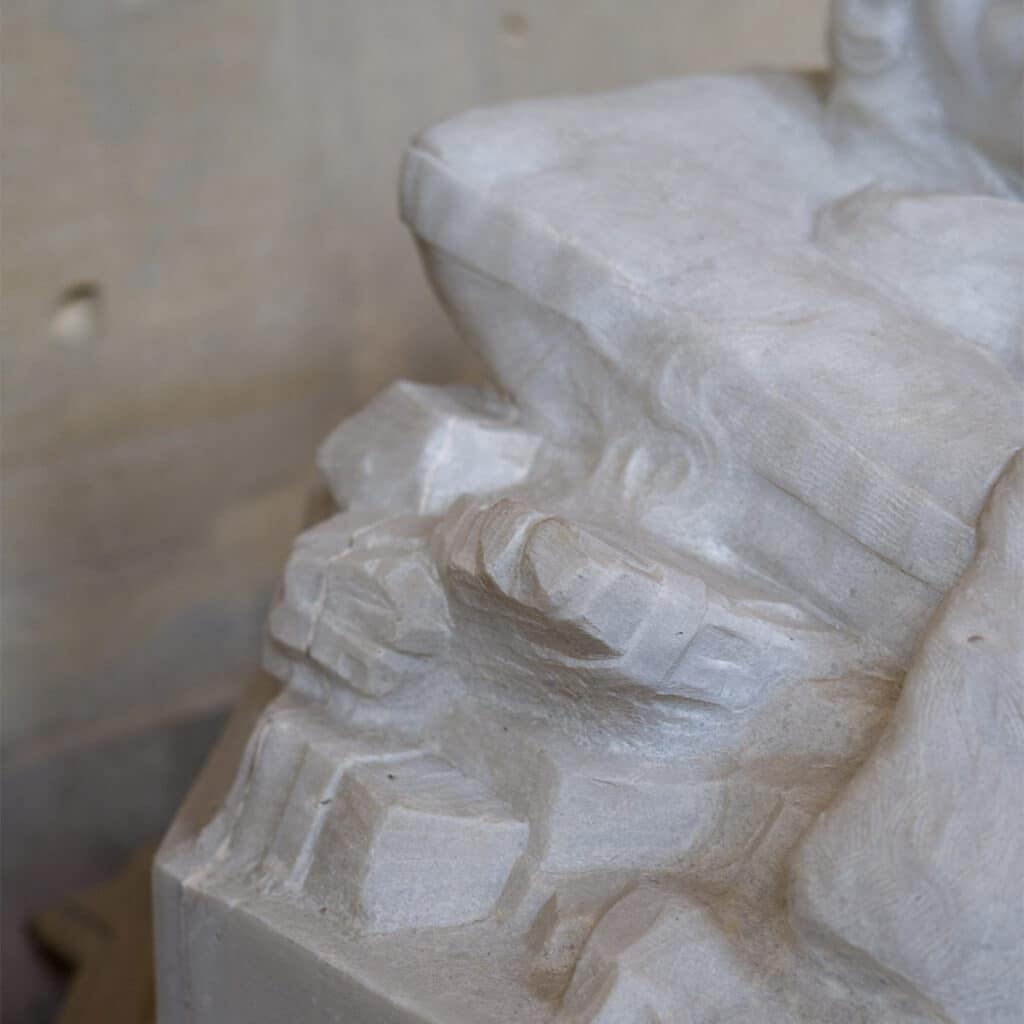
Impossible not to stop in front of the recumbent of the young Louis d’Orléans, a marble masterpiece representing him covered with a shroud, made by Aimé Millet.
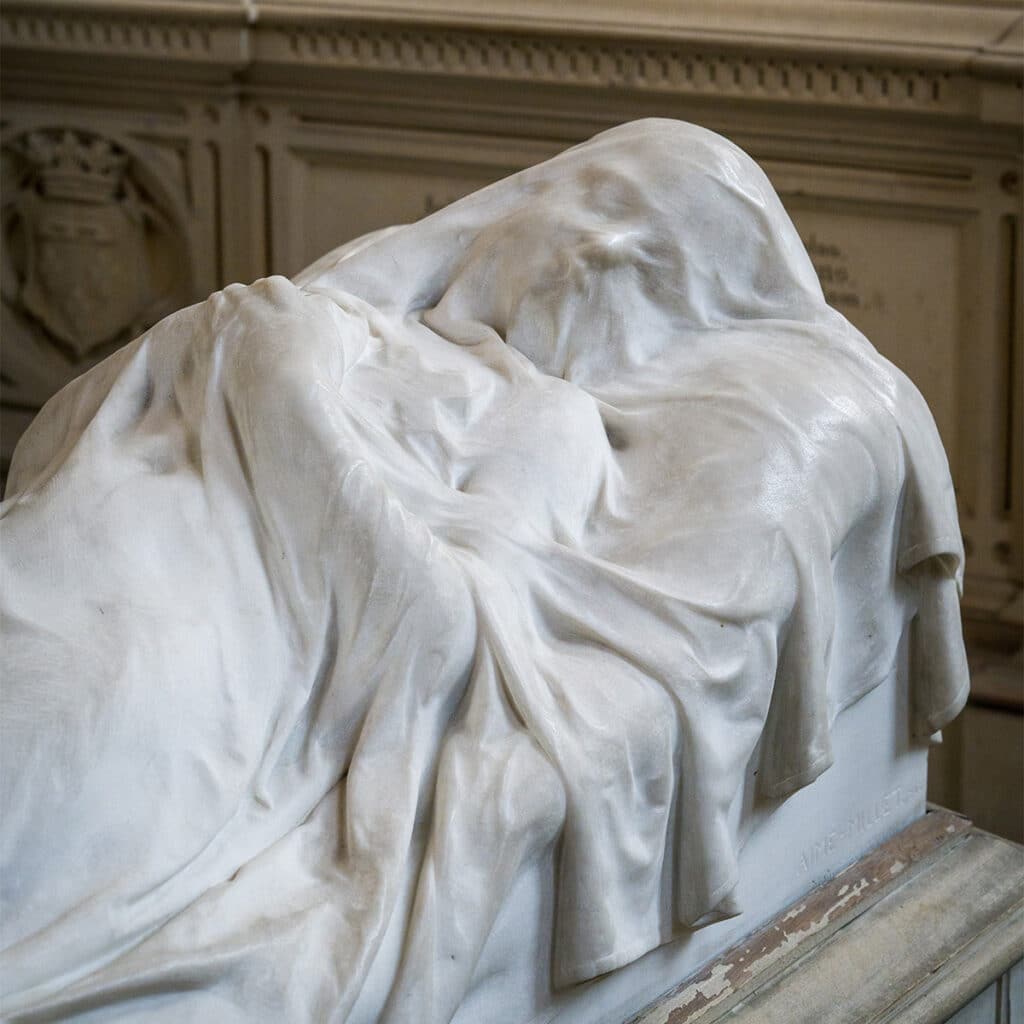
Opposite Louis-Philippe are the tombs of Ferdinand-Philippe d’Orléans and Hélène de Mecklembourg-Schwerin, Duke and Duchess of Orléans, united in death for eternity. The recumbent statue of the duchess (made by Henri Chapu) is set back in a tiny adjoining chapel, because she was a Protestant. However, she reaches out to her husband, whose recumbent is by Pierre Loison.
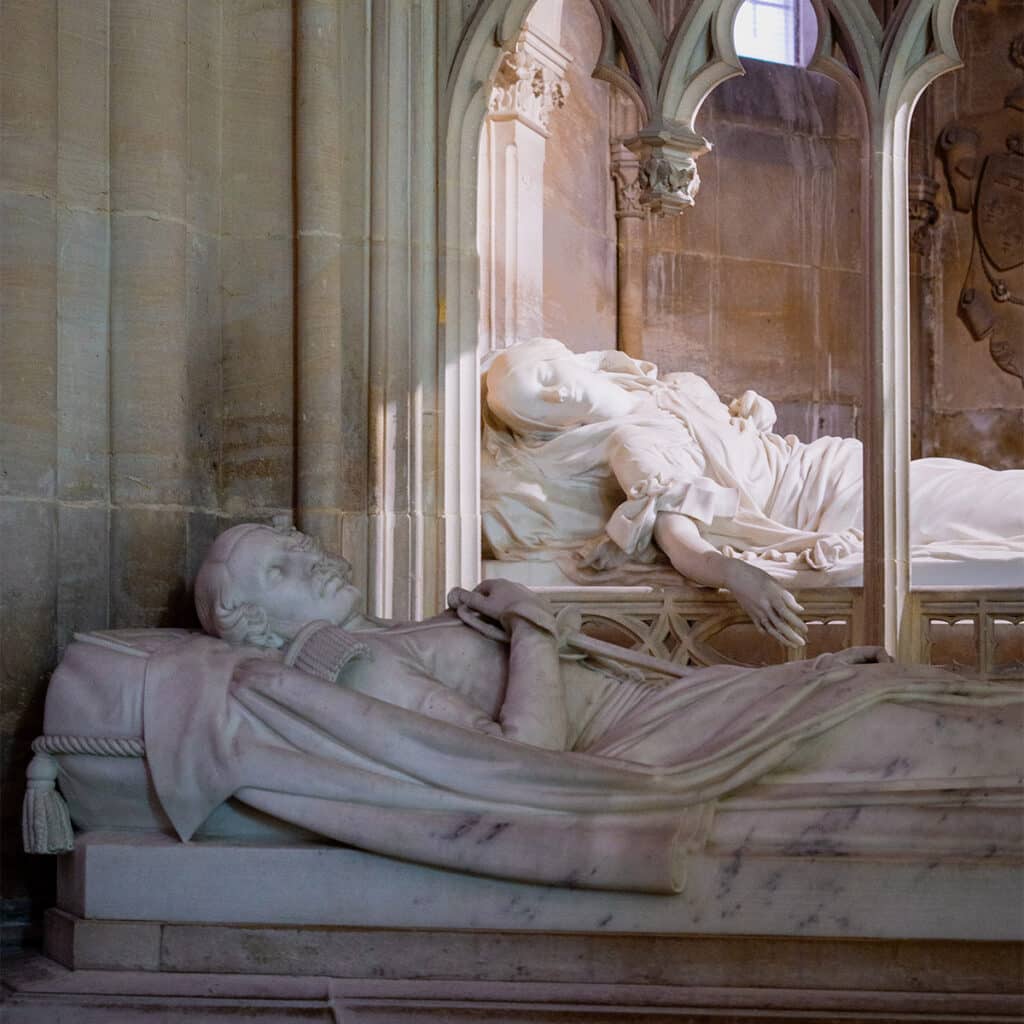
In the crypt, one discovers the more recent tombs, notably that of the Count of Paris, Henri d’Orléans, who died in 2019.
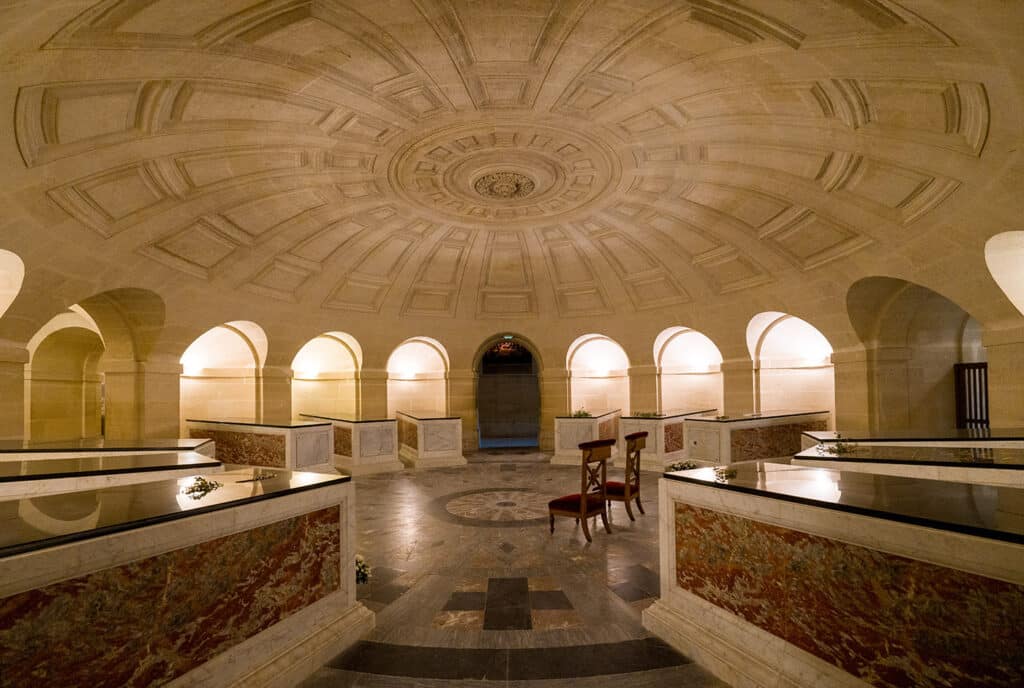
Finally, by taking a long underground corridor, it is possible to discover the Penthièvre vault, a marble cenotaph (funerary monument that does not contain a body) in memory of the Duke of Penthièvre and the Toulouse-Penthièvre family.
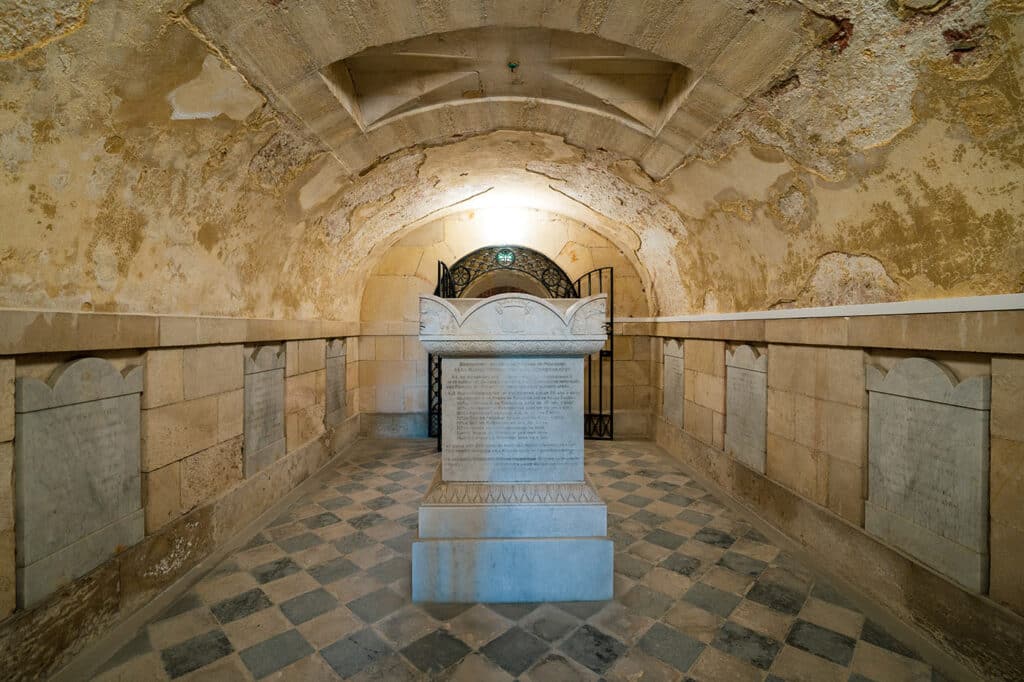
Useful informations
Adress:
Domaine Royal de Dreux
2 square d’Aumale
28100 Dreux (France)
Opening hours:
Schedules vary according to the season. Visit the official website : https://www.domaine-royal-dreux.com/en/horaires/
Website:
https://www.domaine-royal-dreux.com/en/
Prices:
Adults : 9,20 €
Students : 7,50 €
Less than 15 years old : 5,20
Free for children under 7 years old





No Comments
Leave a comment Cancel